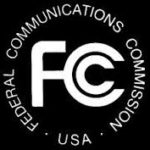 NDIA has called on the Federal Communications Commission to prove its commitment to “closing the digital divide” by adding home broadband affordability, the broadband adoption rates of low income households, and the digital redlining of urban neighborhoods to the issues covered by the agency’s upcoming 2019 Broadband Deployment Report.
NDIA has called on the Federal Communications Commission to prove its commitment to “closing the digital divide” by adding home broadband affordability, the broadband adoption rates of low income households, and the digital redlining of urban neighborhoods to the issues covered by the agency’s upcoming 2019 Broadband Deployment Report.
NDIA’s challenge was included in comments submitted yesterday by Executive Director Angela Siefer in response to an FCC Notice of Inquiry “Concerning Deployment of Advanced Telecommunications Capability to All Americans in a Reasonable and Timely Fashion”. The Notice, or NOI, is the agency’s first step in preparing the annual Broadband Deployment Report, which is required by Section 706 of the Telecommunications Act.
Both this year’s NOI and the 2018 Report, issued last March, include sections entitled “Commission Efforts to Close the Digital Divide”. But neither the “Digital Divide” sections nor the documents as a whole have anything to say about the affordability of broadband access; about measuring (let alone increasing) broadband access for lower-income households; or about any other aspect of digital inclusion. And except for a passing reference to NDIA’s comments in the last NOI process, both documents are silent about the history of ISPs’ deliberate non-deployment policies (redlining) affecting millions of urban residents.
So what are the FCC’s supposed “efforts to close the digital divide”? Basically, they include anything the agency has done in the past year and a half to “encourage broadband deployment” by reducing the regulation of, or creating new public subsidies for, major commercial providers. Here’s an excerpt from NDIA’s comments:
What, exactly, does the Commission mean by “closing the digital divide”?
What do this NOI and the related section of the 2018 Report hope to accomplish by invoking the phrase as an alleged goal of the Commission’s efforts to:
● “remove regulatory barriers to investment” (like municipal small cell oversight authority);
● “expand access to spectrum to support or supplement wireless and satellite broadband services”;
● “eliminat[e]… pricing regulation and tariffing requirements for most types of business data services”; and even…
● “Restore Internet Freedom” by revoking Title II classification for Internet services and rolling back net neutrality protections?
… the most benign explanation: That the Commission majority simply believes the only important barrier to near-universal broadband access is an insufficiently unfettered and insufficiently subsidized ISP industry — so anything the FCC can do to eliminate regulation while increasing rural (and perhaps inner-city) deployment subsidies helps to bring the day of universal access closer.
Even if correct, this benign interpretation does not explain the Commission’s disinterest in investigating whether the consumer cost of home broadband is a barrier to the optimal use of networks already deployed – thus affecting the economics and (one would hope) the design of future deployments….
And it certainly does not explain why the Commission treats evidence of an historic, ongoing pattern of deployment discrimination against poorer neighborhoods by a major provider… as just another “suggestion”.
Then comes NDIA’s challenge:
Nonetheless, NDIA would like to hope that the benign view is correct, and that the Commission majority is truly interested in “closing the digital divide” as that concept is generally understood. If that is the case, we suggest two ways for the Commission to demonstrate its good faith in its 2019 Broadband Deployment Report and beyond:
1. Engage the digital redlining issue.
The Commission should recognize the significance of AT&T’s historic policy of withholding its last generation of advanced residential technologies (fiber to the node) from lower-income urban communities; the lasting damage this policy has caused to the cities and neighborhoods affected; and the terrible precedent it may set for future provider practices if the Commission continues to turn a blind eye to this documented instance of large-scale economic discrimination…
The Commission should add enforcement of the non-discrimination provisions of the Telecommunications Act to its stated policies for encouraging full and fair deployment of high-speed broadband networks, and demonstrate the seriousness of this commitment by opening an investigation of AT&T’s historic fiber-to-the-node deployment practices…
2. Identify adoption and affordability, especially for low income consumers, as important aspects of deployment.
As an important component of its 2019 Broadband Deployment Report and subsequent annual reports, the Commission should expand its examination of broadband adoption, as well as its metrics for progress on deployment, to include:
a) developments in the cost of household broadband access, whether that cost is a barrier to access for a significant number of households, and whether that cost of access is being increased by unreasonable or anti-competitive policies and practices; and
b) much greater detail regarding the rate of adoption of broadband services in different types of locality (rural, city, suburban, tribal) and by classes of consumer, particularly household income cohorts.
An honest, thorough examination of these topics by the Commission, the only entity with the authority and scope to conduct it, is badly needed so that all parties – policy makers, elected officials, technology service providers and the public – can develop a complete picture of the gaps in Americans’ broadband access, the variety of obstacles to closing those gaps, and the likelihood of success of various approaches to closing them.
